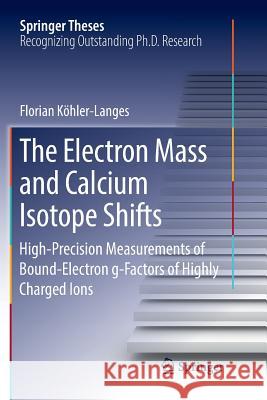The Electron Mass and Calcium Isotope Shifts: High-Precision Measurements of Bound-Electron G-Factors of Highly Charged Ions » książka
topmenu
The Electron Mass and Calcium Isotope Shifts: High-Precision Measurements of Bound-Electron G-Factors of Highly Charged Ions
ISBN-13: 9783319845111 / Angielski / Miękka / 2018 / 168 str.
The Electron Mass and Calcium Isotope Shifts: High-Precision Measurements of Bound-Electron G-Factors of Highly Charged Ions
ISBN-13: 9783319845111 / Angielski / Miękka / 2018 / 168 str.
cena 403,47
(netto: 384,26 VAT: 5%)
Najniższa cena z 30 dni: 385,52
(netto: 384,26 VAT: 5%)
Najniższa cena z 30 dni: 385,52
Termin realizacji zamówienia:
ok. 22 dni roboczych
Dostawa w 2026 r.
ok. 22 dni roboczych
Dostawa w 2026 r.
Darmowa dostawa!
Kategorie BISAC:
Wydawca:
Springer
Seria wydawnicza:
Język:
Angielski
ISBN-13:
9783319845111
Rok wydania:
2018
Wydanie:
Softcover Repri
Ilość stron:
168
Waga:
0.27 kg
Wymiary:
23.39 x 15.6 x 0.99
Oprawa:
Miękka
Wolumenów:
01
Dodatkowe informacje:
Wydanie ilustrowane











